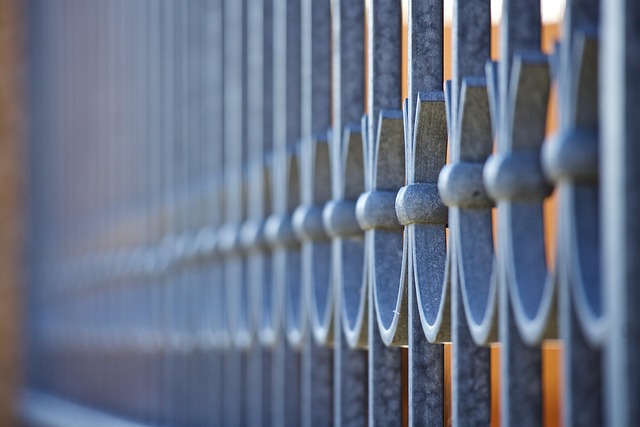In coastal regions, where harsh weather conditions and saltwater exposure are prevalent, choosing the right fencing material is paramount to ensure longevity and structural integrity. This article explores the advantages of durable wooden fencing as a robust solution for coastal areas. We delve into the unique challenges faced in these environments, highlighting the benefits of wood when properly treated. From material selection to installation techniques and maintenance tips, this guide provides essential insights for homeowners seeking reliable and aesthetic protection along the coast.
- Understanding Coastal Fencing Challenges
- Benefits of Durable Wooden Fencing
- Material Selection for Saltwater Resistance
- Installation Techniques for Stability
- Maintenance Tips for Longevity
Understanding Coastal Fencing Challenges
Coastal areas present unique challenges when it comes to fencing due to the harsh marine environment. Salty air, frequent humidity, and potential exposure to storm surges all contribute to the accelerated degradation of typical fencing materials. Traditional wooden fences often struggle to withstand these conditions, leading to regular maintenance or premature replacement.
Durability is a primary concern for homeowners and property managers in coastal regions. Wooden fencing that can resist rot, pest infestation, and weather erosion is essential. This calls for a shift towards high-quality, treated woods or alternative materials designed specifically for coastal use, ensuring longer lifespans without compromising aesthetics.
Benefits of Durable Wooden Fencing
Durable wooden fencing offers a range of benefits for coastal areas, making it an attractive and practical choice for homeowners and businesses alike. Firstly, wood is a natural, renewable resource, which makes it an eco-friendly option. It can be sourced sustainably and has a lower environmental impact than many synthetic materials. This is particularly important in scenic coastal regions where preserving the local ecosystem is a priority.
Additionally, wooden fencing provides excellent protection against harsh weather conditions, a key consideration for coastal properties. The robust nature of durable wood means it can withstand strong winds, heavy rain, and even salty sea air without deteriorating quickly. This longevity reduces the need for frequent replacements, saving time and money in the long run.
Material Selection for Saltwater Resistance
When selecting materials for coastal fencing, saltwater resistance is paramount. Traditional wooden fences may not endure the harsh marine environment, leading to rot and decay over time. For a durable solution, opt for high-quality treated wood specifically designed to withstand saltwater exposure. These treatments often involve chemical impregnation with preservatives that inhibit mold, mildew, and bacterial growth, ensuring longer-lasting performance.
Choosing wood species suitable for coastal applications is crucial. Hardwoods like cedar or redwood are renowned for their natural resistance to rot and insects. These woods have a lower moisture content than softwoods, making them less susceptible to the damaging effects of saltwater. Additionally, applying a protective coating or finish can further enhance the fence’s durability, providing an extra barrier against corrosion and the elements.
Installation Techniques for Stability
When installing durable wooden fencing in coastal areas, it’s crucial to employ techniques that ensure stability against harsh weather conditions. One effective method is to anchor posts securely into concrete foundations, particularly in regions prone to high winds and storm surges. This involves digging deep holes and setting the posts in place before pouring concrete to create a robust base. An additional layer of protection can be achieved by treating the wood with water-repellent chemicals that prevent moisture absorption, which is a common problem along coastlines due to higher humidity levels.
Another technique for enhancing stability is using bracket systems or rail connectors. These metal components are attached to both posts and rails, providing extra support and reducing the risk of warping or rot, common issues with untreated wood in moist environments. Proper spacing between fence panels is also essential; allowing for some flexibility can help absorb impact forces from storms and high tides, ensuring the longevity of the fencing structure.
Maintenance Tips for Longevity
To ensure your durable wooden fencing stands the test of time in coastal areas, regular maintenance is key. Start by cleaning the fence at least twice a year to remove salt spray and other debris that can accelerate wood deterioration. Use a pressure washer or soft brush with a mild detergent solution; avoid harsh chemicals that could damage the finish. After cleaning, apply a fresh coat of weather-resistant stain or sealant to protect the wood from moisture and UV rays. This step is crucial as it helps prevent cracking, fading, and rot.
Additionally, inspect your fence regularly for any signs of damage, such as loose boards, split posts, or damaged hardware. Repair or replace these components promptly to maintain structural integrity and prevent further issues. Consider using water-resistant fasteners and post anchors to bolster the fence’s stability against coastal winds and corrosion. Lastly, keep the area around the fence free from overhanging branches that could drop debris, blocking the sun, or causing physical damage.
